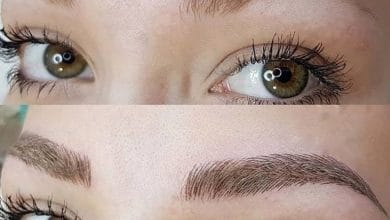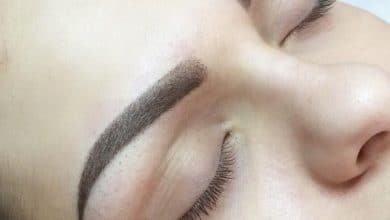Microblading eyebrows with no hair

microblading isn’t only reserved for thin, sparse brows — even if you’re blessed with naturally full ones. … But the results are especially remarkable for people with thin brows (and can be nearly life changing for people who live with alopecia).
Also, can you tint your eyebrows if you have no hair? Unfortunately, you cannot tint where there is no brow hair. You would essentially be trying to tint your skin. This will not work.
People ask , who should not get their eyebrows Microbladed? Those who are NOT ideal candidates for Microblading : are under the age of 18. are pregnant or breastfeeding (please consult your doctor). have been on Accutane within one year.
, how do you fill in eyebrows without hair?
, why microblading is a bad idea? Microblading could cause: Infection. If your technician uses dirty water or equipment, they can spread bacteria like staphylococcus (staph). They could also spread viruses like HIV, hepatitis, or herpes.
Does microblading ruin your natural eyebrows?
In short, no. Although there are some considerations which we’ll get into more below, it doesn’t seem that semi-permanent brow procedures have any kind of lasting effect on the way your natural hair grows, even when it seems your entire brow needs to be reshaped.
How do you draw missing eyebrows?
How do you fix barely eyebrows?
What is the best way to disguise thinning brows? A brow powder is one of the best methods of disguising thinning brows. Filling brows with a brow powder gives a soft, but full effect that also looks very natural. For any areas which need a little extra colour, I suggest applying a specially designed wax pencil.
How does microblading look after 3 years?
After a year (or six months, if you use tretinoin or do frequent chemical peels), you will most likely need regular, yearly touch-ups to maintain the original results. Without these touch-ups, Menendez says you would see the microbladed brows fade and eventually disappear completely after three years.
How painful is eyebrow microblading?
Although the procedure can take upward of 2 hours, most people report only feeling minor pressure or discomfort and less pain than a typical tattoo due to the use of a numbing cream. … Some level of pain or discomfort should be expected. If you’re considering microblading, be sure to properly research the provider.
Is microblading really worth it?
So, is microblading worth it? The short answer to this question is yes, eyebrow microblading is definitely worth it. Especially considering the amount of talent and experience semi-permanent makeup artists have today, there’s no going wrong when getting eyebrows microbladed. You’ll be surprised by the results.
Can you regrow eyebrows after 50?
Good eyebrows, ones that add structure and definition to our faces, can be attained at any age. The problem for many of us at 50+ is that we went a bit crazy back in the day with eyebrow plucking. But not to worry, dear readers, over plucked (or over waxed) brows can be fixed.
What is it called when you don’t have eyebrows?
Overview. Madarosis is a condition that causes people to lose the hair from their eyelashes or eyebrows. It can affect one side of the face or both sides. This condition may lead to either complete or partial loss of eyelash or eyebrow hair.
What is it called when you have no eyebrows?
Madarosis is a condition that results in the loss of eyelashes, and sometimes eyebrows. The term “madarosis” is derived from the ancient Greek “madaros”, meaning “bald”. It originally was a disease of only losing eyelashes but it currently is the loss of both eyelashes and eyebrows.
Do celebrities get microblading?
That’s where microblading eyebrows come in handy. Hollywood celebrities have been getting on the microblade train for years! Their microblading brows look so good…even with #nomakeup. They are spending less time in the makeup chair and more time enjoying semi-permanent eyebrows as if every day is a red carpet day.
How many times can you Microblade your eyebrows?
As mentioned above, microblading can last anywhere from 18 to 30 months. In general, it requires touch-ups once or twice a year. Once pigment from the procedure begins to noticeably fade, you’ll need to go back to your practitioner for a touch-up application.








